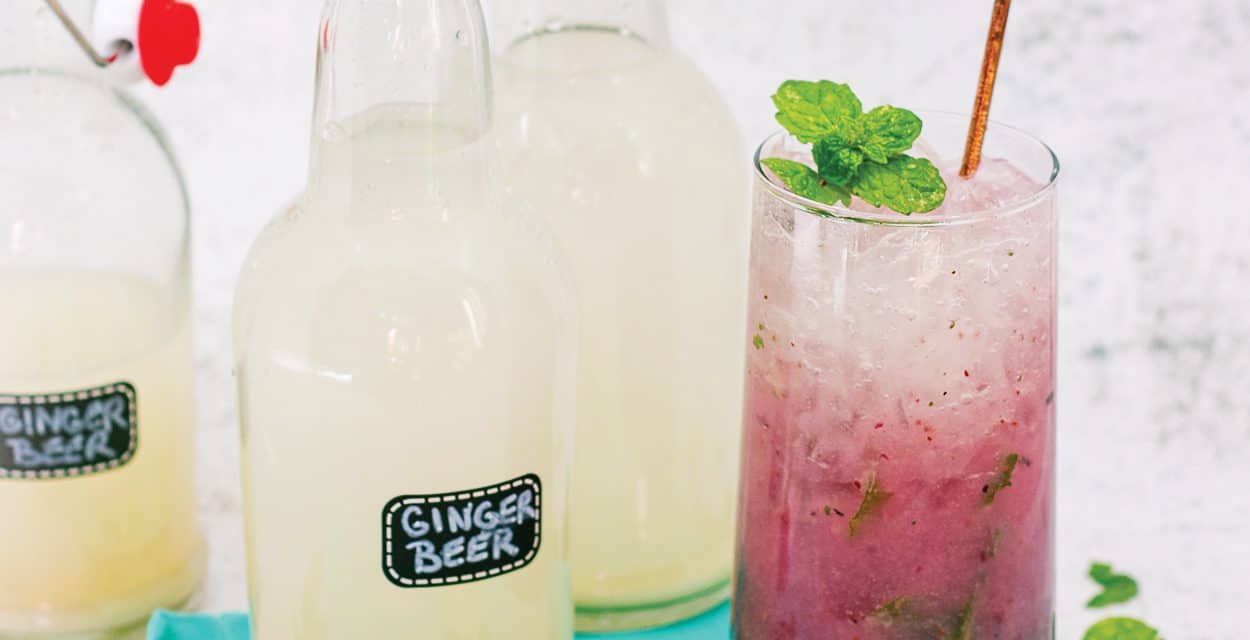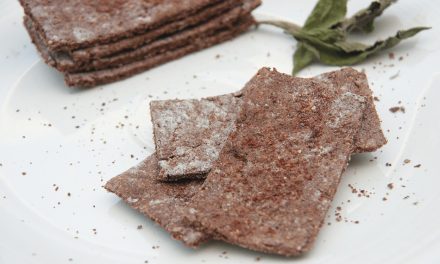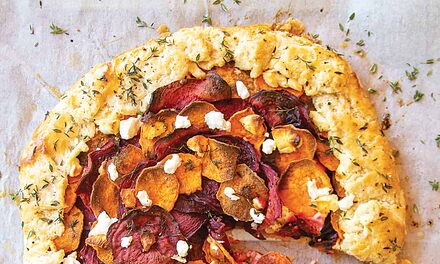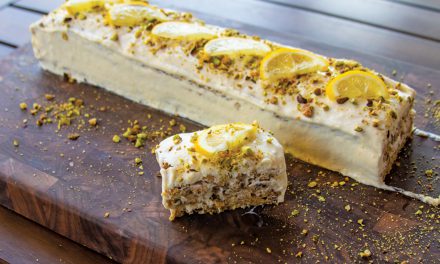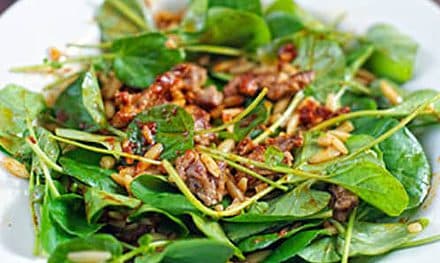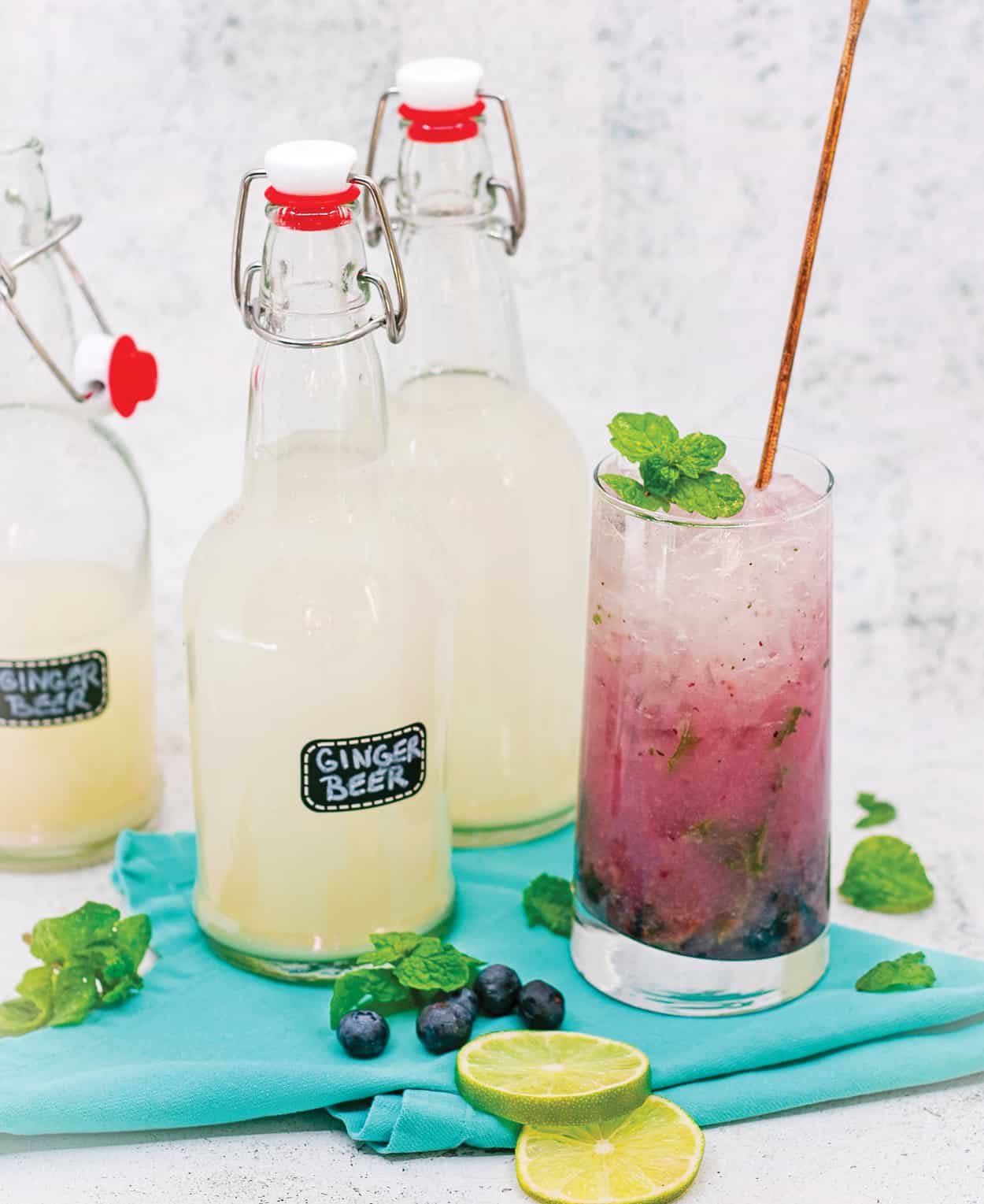
Making ginger beer is a bit of a risky business, but you will have a fizzy addition to your mocktail repertoire if you follow these instructions. After the ginger beer has finished fermenting, you can add fruit, simple syrup, or juice to create a customized mocktail, or drink it as is. The longer you allow the ginger beer to ferment, the more sugar is metabolized by the yeast, resulting in a less sweet and drier beverage.
DIY Ginger Beer
Ingredients
- 2–3 knobs ginger peeled and grated (1/4 cup grated)
- 1/2 teaspoon cream of tartar
- 1/4 cup lemon juice freshly squeezed
- 1 teaspoon active dry yeast or brewer’s yeast
- 1 cup granulated cane sugar
- 9 cups water filtered or spring (do not use tap water)
Instructions
- In a large stockpot, add cream of tartar, lemon juice, and ginger. Add 4 cups of water to the pot, and bring mixture to a boil. Turn heat to medium, add sugar, and stir continuously until all of the sugar dissolves. Remove from heat.
- Add remaining 5 cups of water (cold) to the pot and allow it to cool to around 75°F. Add yeast and stir well. Cover the pot with a clean kitchen towel and place it in a warm, dark part of your house for 3 hours.
- Strain liquid into a large pitcher through a mesh strainer to remove all ginger bits. Pour ginger brew into a clean 2-liter plastic bottle. Do not fill the bottle to the top because the fermentation will yield carbon dioxide. Do not use glass bottles during this fermentation step because the glass can explode under pressure.
- Place the bottle in a dark, warm room for 2–3 days. A few times a day, carefully loosen the cap to relieve some of the pressure without opening the bottle all the way. Set an alarm or reminder for this; if you skip this step, you might wind up with an explosion. Be very careful during this process, and do not point the bottle at anyone’s face or your own. After about 24 hours, you will notice yeast colonies floating on top of the liquid and settling to the bottom—this is normal.
- Once the ginger beer has finished fermenting, you can transfer it to glass bottles and store it in the refrigerator. Be very careful when opening the bottles because the brew will continue to ferment and still be very carbonated. Always point bottles away from your face or anyone else’s face while opening.
- A note about fermentation: While some ferments actually use strains of mold (like aged cheese), you’ll want to avoid consuming dangerous molds. Typically, if these molds grow, they’ll be on the surface of the ferment or around the rim of the vessels—avoid anything that’s colorful or black. If your ferment has black mold growing on it, toss it. Keeping your vessels clean and sterilizing them before use is the best way to avoid bad mold.
Berry Mocktail Mule
Ingredients
- 1/4 cup fresh berries
- 1/2 lime cut in half
- 8 mint leaves
- 1 teaspoon sugar
- 8 ounces ginger beer
- Crushed ice
Instructions
- Add washed berries, mint, lime wedges, and sugar to a large glass. Muddle ingredients together well. Add crushed ice on top and pour in ginger beer. Garnish with a mint sprig.
Edible celebrates New Mexico's food culture, season by season. We believe that knowing where our food comes from is a powerful thing. With our high-quality, aesthetically pleasing and informative publication, we inspire readers to support and celebrate the growers, producers, chefs, beverage and food artisans, and other food professionals in our community.

